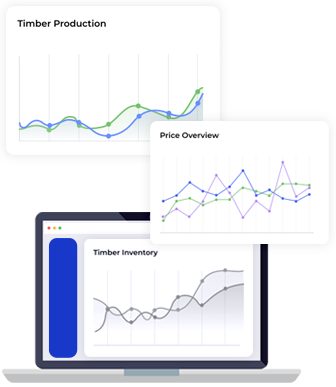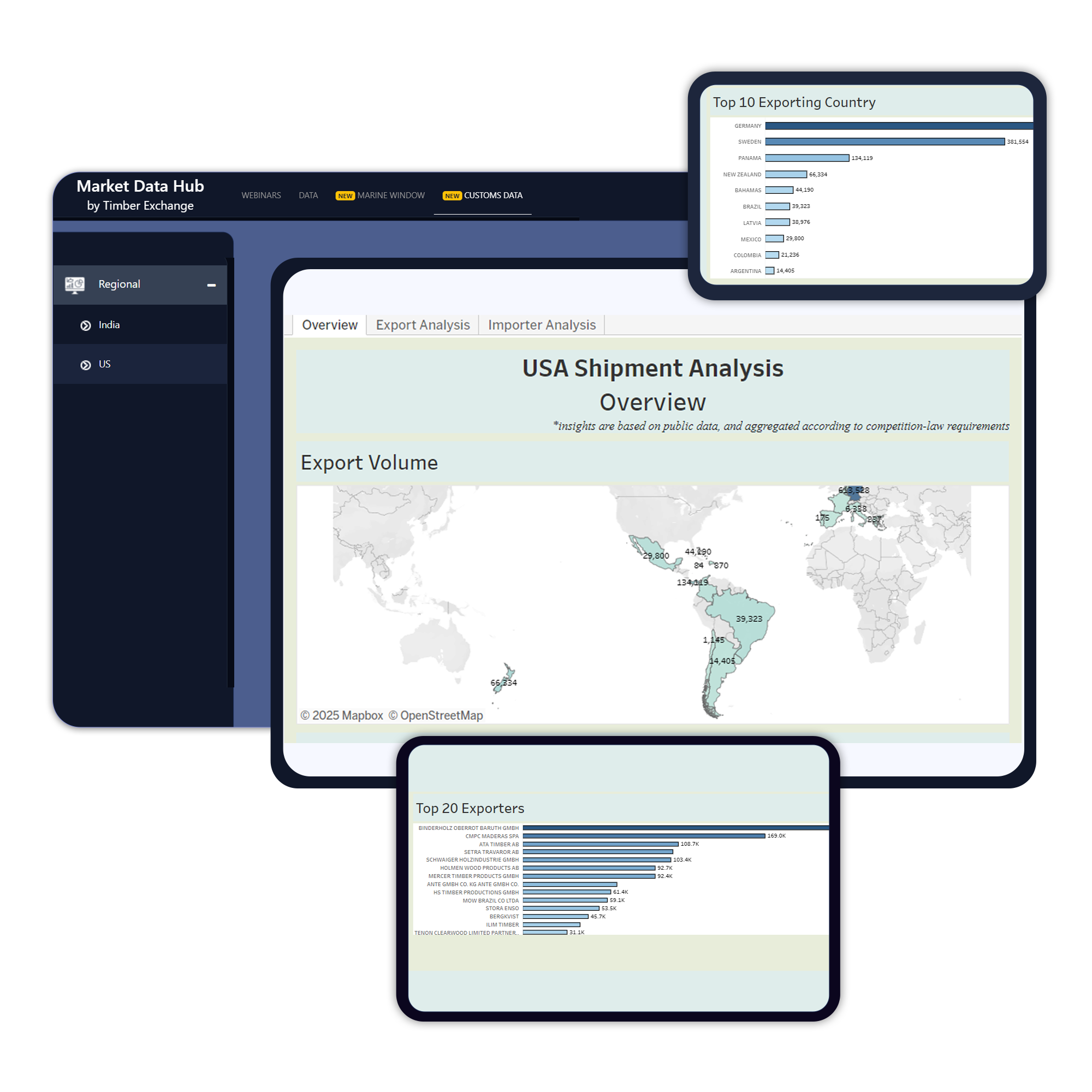
Is the Global Timber Market Headed for a Rebound or Downswing?
Posted on July 23, 2024 |
The global timber market is seeing significant changes, with various factors affecting supply, demand, and prices. Keeping up with these developments is vital for effective planning and risk management. Here are the key updates:
-Austria: Austria's softwood sawlog prices have remained stable in July despite restrained market opportunities due to a significant decline in private house construction. Additionally, the price for imported Nordic timber has started increasing.
-Canada: Roundwood prices have increased by 15%, and the volume purchased has fallen to a record low. Wildfires in British Columbia are anticipated to disrupt operations and drive up timber prices further.
-China: Inventory and consumption in Shanghai have started declining, with imports from Russia on a downward trend.
-Finland: Companies in Finland's wood products sector expect the decline in turnover to stabilise, indicating a hopeful outlook. The roadside price of logs has reached a record high.
-France: Prices for construction and pallet timber remain stable.
-Germany: The construction industry slowdown has impacted the wood market despite stable wood prices in May. Sales conditions for construction timber and exports were challenging, leading to a substantial decrease in sales for the sawmill industry. Additionally, the price of imported Nordic timber has started increasing.
-Japan: Domestic production is on a downward trend. European and Canadian stock is increasing, while Russian stock is falling.
-Latvia: Domestic timber production has rebounded.
-New Zealand: Timber stock has increased to near-record levels.
-Sweden: Pine production has reached a record level not seen since before COVID-19. DIY activity shows an uptick for the first time in two years.
-UK: The timber import market saw stronger performance in recent months, with import volumes 4.7% higher compared to previous months.
-US: Lumber prices have reached five-month highs due to various factors, including supply chain adjustments and market demand.
-Ocean Freight Rates: Ocean freight rates are approaching pre-COVID-19 levels. This change is partly due to disruptions caused by the Houthi attacks in the Red Sea and adjustments in global shipping dynamics.
Staying informed about market trends is crucial in these changing times. What trends are you noticing in your region? Share your thoughts!
To know more such news, subscribe to our newsletter today. For in-depth analysis of real-time data related to global timber market, subscribe to our Market Data Hub.





